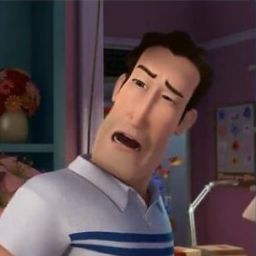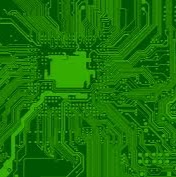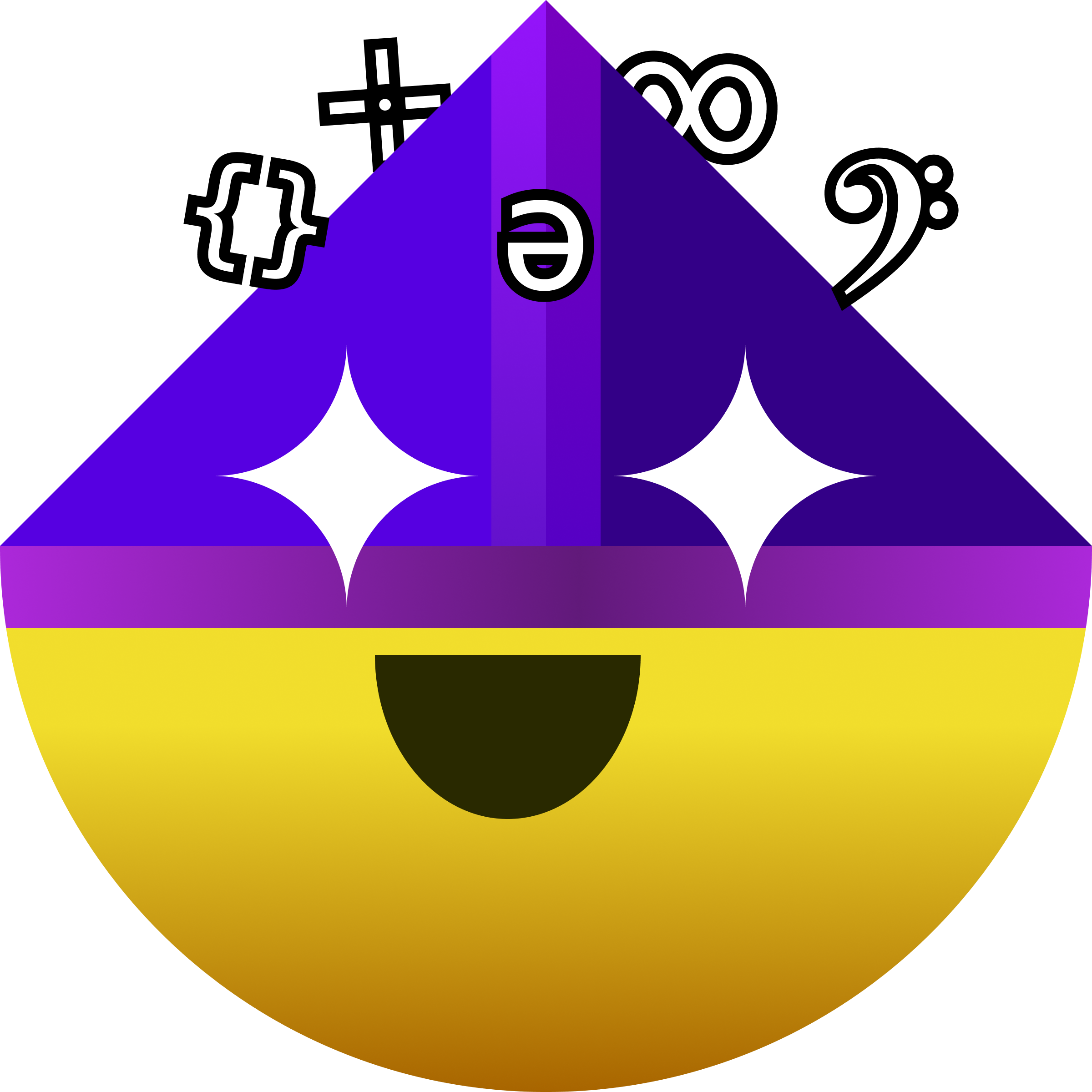What concepts or facts do you know from math that is mind blowing, awesome, or simply fascinating?
Here are some I would like to share:
- Gödel’s incompleteness theorems: There are some problems in math so difficult that it can never be solved no matter how much time you put into it.
- Halting problem: It is impossible to write a program that can figure out whether or not any input program loops forever or finishes running. (Undecidablity)
The Busy Beaver function
Now this is the mind blowing one. What is the largest non-infinite number you know? Graham’s Number? TREE(3)? TREE(TREE(3))? This one will beat it easily.
- The Busy Beaver function produces the fastest growing number that is theoretically possible. These numbers are so large we don’t even know if you can compute the function to get the value even with an infinitely powerful PC.
- In fact, just the mere act of being able to compute the value would mean solving the hardest problems in mathematics.
- Σ(1) = 1
- Σ(4) = 13
- Σ(6) > 101010101010101010101010101010 (10s are stacked on each other)
- Σ(17) > Graham’s Number
- Σ(27) If you can compute this function the Goldbach conjecture is false.
- Σ(744) If you can compute this function the Riemann hypothesis is false.
Sources:
- YouTube - The Busy Beaver function by Mutual Information
- YouTube - Gödel’s incompleteness Theorem by Veritasium
- YouTube - Halting Problem by Computerphile
- YouTube - Graham’s Number by Numberphile
- YouTube - TREE(3) by Numberphile
- Wikipedia - Gödel’s incompleteness theorems
- Wikipedia - Halting Problem
- Wikipedia - Busy Beaver
- Wikipedia - Riemann hypothesis
- Wikipedia - Goldbach’s conjecture
- Wikipedia - Millennium Prize Problems - $1,000,000 Reward for a solution
e^(I*pi) = -1
My favorite form, just slightly different,
e^(i*π)+1=0Euler’s identity directly relates all the really cool mathematical constants into one elegant formula:
e,i,π,1, and0I think that is the cooler form but I first saw Euler’s ID as =-1
Seeing mathematics visually.
I am a huge fan of 3blue1brown and his videos are just amazing. My favorite is linear algebra. It was like an out of body experience. All of a sudden the world made so much more sense.
His video about understanding multiple dimensions was what finally made it click for me
I find the logistic map to be fascinating. The logistic map is a simple mathematical equation that surprisingly appears everywhere in nature and social systems. It is a great representation of how complex behavior can emerge from a straightforward rule. Imagine a population of creatures with limited resources that reproduce and compete for those resources. The logistic map describes how the population size changes over time as a function of its current size, and it reveals fascinating patterns. When the population is small, it grows rapidly due to ample resources. However, as it approaches a critical point, the growth slows, and competition intensifies, leading to an eventual stable population. This concept echoes in various real-world scenarios, from describing the spread of epidemics to predicting traffic jams and even modeling economic behaviors. It’s used by computers to generate random numbers, because a computer can’t actually generate truly random numbers. Veritasium did a good video on it: https://www.youtube.com/watch?v=ovJcsL7vyrk
I find it fascinating how it permeates nature in so many places. It’s a universal constant, but one we can’t easily observe.
Small nit: you don’t compute sigma, you prove a value for a given input. Sigma here is uncomputable.
was not aware of the machines halting only iff conjectUres are true, tho. Thats a flat out amazing construction.
Multiply 9 times any number and it always “reduces” back down to 9 (add up the individual numbers in the result)
For example: 9 x 872 = 7848, so you take 7848 and split it into 7 + 8 + 4 + 8 = 27, then do it again 2 + 7 = 9 and we’re back to 9
It can be a huge number and it still works:
9 x 987345734 = 8886111606
8+8+8+6+1+1+1+6+0+6 = 45
4+5 = 9
Also here’s a cool video about some more mind blowing math facts
I suspect this holds true to any base x numbering where you take the highest valued digit and multiply it by any number. Try it with base 2 (1), 4 (3), 16 (F) or whatever.
Here’s a fun one - you know the concept of regular polyhedra/platonic solids right? 3d shapes where every edge, angle, and face is the same? How many of them are there?
Did you guess 48?
There’s way more regular solids out there than the bog standard set of DnD dice! Some of them are easy to understand, like the Kepler-poisont solids which basically use a pentagramme in various orientations for the face shape (hey the rules don’t say the edges can’t intersect!) To uh…This thing. And more! This video is a fun breakdown (both mathematically and mentally) of all of them.
Unfortunately they only add like 4 new potential dice to your collection and all of them are very painful.
convex regular polyhedra
I believe this is the primary distinction
Euler’s identity is pretty amazing:
e^iπ + 1 = 0
To quote the Wikipedia page:
Three of the basic arithmetic operations occur exactly once each: addition, multiplication, and exponentiation. The identity also links five fundamental mathematical constants:[6]
The number 0, the additive identity.
The number 1, the multiplicative identity.
The number π (π = 3.1415…), the fundamental circle constant.
The number e (e = 2.718…), also known as Euler’s number, which occurs widely in mathematical analysis.
The number i, the imaginary unit of the complex numbers.The fact that an equation like that exists at the heart of maths - feels almost like it was left there deliberately.
For the uninitiated, the monty Hall problem is a good one.
Start with 3 closed doors, and an announcer who knows what’s behind each. The announcer says that behind 2 of the doors is a goat, and behind the third door is
a carstudent debt relief, but doesn’t tell you which door leads to which. They then let you pick a door, and you will get what’s behind the door. Before you open it, they open a different door than your choice and reveal a goat. Then the announcer says you are allowed to change your choice.So should you switch?
The answer turns out to be yes. 2/3rds of the time you are better off switching. But even famous mathematicians didn’t believe it at first.
deleted by creator
I know the problem is easier to visualize if you increase the number of doors. Let’s say you start with 1000 doors, you choose one and the announcer opens 998 other doors with goats. In this way is evident you should switch because unless you were incredibly lucky to pick up the initial door with the prize between 1000, the other door will have it.
I don’t find this more intuitive. It’s still one or the other door.
The odds you picked the correct door at the start is 1/1000, that means there’s a 999/1000 chance it’s in one of the other 999 doors. If the man opens 998 doors and leaves one left then that door has 999/1000 chance of having the prize.
The thing is, you pick the door totally randomly and since there are more goats, the chance to pick a goat is higher. That means there’s a 2/3 chance that the door you initially picked is a goat. The announcer picks the other goat with a 100% chance, which means the last remaining door most likely has the prize behind it
Edit: seems like this was already answered by someone else, but I didn’t see their comment due to federation delay. Sorry
Don’t be sorry, your comment was the first time I actually understood how it works. Like I understand the numbers, but I still didn’t get the problem, even when increasing the amount of doors. It was your explanation that made it actually click.
I think the problem is worded specifically to hide the fact that you’re creating two set of doors by picking a door, and that shrinking a set actually make each individual door in that set more likely to have the prize.
Think of it this way : You have 4 doors, 2 blue doors and 2 red doors. I tell you that there is 50% chance of the prize to be in either a blue or a red door. Now I get to remove a red door that is confirmed to not have the prize. If you had to chose, would you pick a blue door or a red door? Seems obvious now that the remaining red door is somehow a safer pick. This is kind of what is happening in the initial problem, but since the second ensemble is bigger to begin with (the two doors you did not pick), it sort of trick you into ignoring the fact that the ensemble shrank and that it made the remaining door more “valuable”, since the two ensembles are now of equal size, but only one ensemble shrank, and it was always at 2/3 odds of containing the prize.
The point is, the odds don’t get recomputed after the other doors are opened. In effect you were offered two choices at the start: choose one door, or choose all of the other 999 doors.
This is the way to think about it.
Same here, even after reading other explanations I don’t see how the odds are anything other than 50/50.
This is so mind blowing to me, because I get what you’re saying logically, but my gut still tells me it’s a 50/50 chance.
But I think the reason it is true is because the other person didn’t choose the other 998 doors randomly. So if you chose any of the other 998 doors, it would still be between the door you chose and the winner, other than the 1/1000 chance that you chose right at the beginning.
How do we even come up with such amazing problems right ? It’s fascinating.
This is fantastic, thank you.
I now recall there was a numberphile with exactly that visualisation! It’s a clever visual
It really is, it’s how my probability class finally got me to understand why this solution is true.
It took me a while to wrap my head around this, but here’s how I finally got it:
There are three doors and one prize, so the odds of the prize being behind any particular door are 1/3. So let’s say you choose door #1. There’s a 1/3 chance that the prize is behind door #1 and, therefore, a 2/3 chance that the prize is behind either door #2 OR door #3.
Now here’s the catch. Monty opens door #2 and reveals that it does not contain the prize. The odds are the same as before – a 1/3 chance that the prize is behind door #1, and a 2/3 chance that the prize is behind either door #2 or door #3 – but now you know definitively that the prize isn’t behind door #2, so you can rule it out. Therefore, there’s a 1/3 chance that the prize is behind door #1, and a 2/3 chance that the prize is behind door #3. So you’ll be twice as likely to win the prize if you switch your choice from door #1 to door #3.
deleted by creator
It’s a good one.
First, fuck you! I couldn’t sleep. The possibility to win the car when you change is the possibility of your first choice to be goat, which is 2/3, because you only win when your first choice is goat when you always change.
x1: you win
x2: you change
x3: you pick goat at first choice
P(x1|x2,x3)=1 P(x1)=1/2 P(x3)=2/3 P(x2)=1/2
P(x1|x2) =?
Chain theory of probability:
P(x1,x2,x3)=P(x3|x1,x2)P(x1|x2)P(x2)=P(x1|x2,x3)P(x2|x3)P(x3)
From Bayes theorem: P(x3|x1,x2)= P(x1|x2,x3)P(x2)/P(x1) =1
x2 and x3 are independent P(x2|x3)=P(x2)
P(x1| x2)=P(x3)=2/3 P(x2|x1)=P(x1|x2)P(x2)/P(X1)=P(x1|x2)
P(x1=1|x2=0) = 1- P(x1=1|x2=1) = 1\3 is the probability to win if u do not change.
Why do you have a P(x1) = 1/2 at the start? I’m not sure what x1 means if we don’t specify a strategy.
Just count the number of possibilities. If you change there there two possible first choices to win + if you do not change 1 possible choice to win = 3. If you change there is one possible first choice to lose + if you do not change there two possible first choices to lose=3 P(x1)=P(x1’) = 3/6
Ah, so it’s the probability you win by playing randomly. Gotcha. That makes sense, it becomes a choice between 2 doors
Without condition would be more technically correct term but yes
I know it to be true, I’ve heard it dozens of times, but my dumb brain still refuses to accept the solution everytime. It’s kind of crazy really
This explanation really helped me make sense of it: Monty Hall Problem (best explanation) - Numberphile
like on paper the odds on your original door was 1/3 and the option door is 1/2, but in reality with the original information both doors were 1/3 and now with the new information both doors are 1/2.
Your original odds were 1/3, and this never changes since you don’t get any new information.
The key is that Monty always reveals a goat. No matter what you choose, even before you make your choice, you know Monty will reveal a goat. Therefore, when he does so, you learn nothing you didn’t already know.
Yes, you don’t actually have to switch. You could also throw a coin to decide to stay at the current door or to switch. By throwing a coin, you actually improved your chances of winning the price.
This is incorrect. The way the Monty Hall problem is formulated means staying at the current door has 1/3 chance of winning, and switching gives you 2/3 chance. Flipping a coin doesn’t change anything. I’m not going to give a long explanation on why this is true since there are plenty other explanations in other comments already.
This is a common misconception that switching is better because it improves your chances from 1/3 to 1/2, whereas it actually increases to 2/3.
To me, it makes sense because there was initially 2 chances out of 3 for the prize to be in the doors you did not pick. Revealing a door, exclusively on doors you did not pick, does not reset the odds of the whole problem, it is still more likely that the prize is in one of the door you did not pick, and a door was removed from that pool.
Imo, the key element here is that your own door cannot be revealed early, or else changing your choice would not matter, so it is never “tested”, and this ultimately make the other door more “vouched” for, statistically, and since you know that the door was more likely to be in the other set to begin with, well, might as well switch!
Let’s name the goats Alice and Bob. You pick at random between Alice, Bob, and the Car, each with 1/3 chance. Let’s examine each case.
-
Case 1: You picked Alice. Monty eliminates Bob. Switching wins. (1/3)
-
Case 2: You picked Bob. Monty eliminates Alice. Switching wins. (1/3)
-
Case 3: You picked the Car. Monty eliminates either Alice or Bob. You don’t know which, but it doesn’t matter-- switching loses. (1/3)
It comes down to the fact that Monty always eliminates a goat, which is why there is only one possibility in each of these (equally probable) cases.
From another point of view: Monty revealing a goat does not provide us any new information, because we know in advance that he must always do so. Hence our original odds of picking correctly (p=1/3) cannot change.
In the variant “Monty Fall” problem, where Monty opens a random door, we perform the same analysis:
- Case 1: You picked Alice. (1/3)
- Case 1a: Monty eliminates Bob. Switching wins. (1/2 of case 1, 1/6 overall)
- Case 1b: Monty eliminates the Car. Game over. (1/2 of case 1, 1/6 overall)
- Case 2: You picked Bob. (1/3)
- Case 2a: Monty eliminates Alice. Switching wins. (1/2 of case 2, 1/6 overall)
- Case 2b: Monty eliminates the Car. Game over. (1/2 of case 2, 1/6 overall)
- Case 3: You picked the Car. (1/3)
- Case 3a: Monty eliminates Alice. Switching loses. (1/2 of case 3, 1/6 overall)
- Case 3b: Monty eliminates Bob. Switching loses. (1/2 of case 3, 1/6 overall)
As you can see, there is now a chance that Monty reveals the car resulting in an instant game over-- a 1/3 chance, to be exact. If Monty just so happens to reveal a goat, we instantly know that cases 1b and 2b are impossible. (In this variant, Monty revealing a goat reveals new information!) Of the remaining (still equally probable!) cases, switching wins half the time.
-
But even famous mathematicians didn’t believe it at first.
They emphatically did not believe it at first. Marilyn vos Savant was flooded with about 10,000 letters after publishing the famous 1990 article, and had to write two followup articles to clarify the logic involved.
Oh that’s cool - I had heard one or two examples only. Is there some popular writeup of the story from Savant’s view?
I couldn’t tell you - I used the Wikipedia article to reference the specifics and I’m not sure where I first heard about the story. I just remember that the mathematics community dogpiled on her hard for some time and has since completely turned around to accept her answer as correct.
Also relevant - she did not invent the problem, but her article is considered by some to have been what popularized it.
deleted by creator
Not so much a fact, but I’ve always liked the prime spirals: https://en.wikipedia.org/wiki/Ulam_spiral
Also, not as impressive as the busy beaver, but Knuth’s up-arrow notation is cool: https://en.wikipedia.org/wiki/Knuth’s_up-arrow_notation
Thanks for sharing! (No worries, changed the title from “fact” to “thing” to be a bit more broad)
Knuth’s arrow shows up in… Magic the Gathering. There’s a challenge of “how much damage can you deal with just 3 cards and without infinitely repeating loops?”. Turns out that stacking doubler effects can get us really high. https://www.polygon.com/23589224/magic-phyrexia-all-will-be-one-best-combo-attacks-tokens-vindicator-mondrak
Imagine a soccer ball. The most traditional design consists of white hexagons and black pentagons. If you count them, you will find that there are 12 pentagons and 20 hexagons.
Now imagine you tried to cover the entire Earth in the same way, using similar size hexagons and pentagons (hopefully the rules are intuitive). How many pentagons would be there? Intuitively, you would think that the number of both shapes would be similar, just like on the soccer ball. So, there would be a lot of hexagons and a lot of pentagons. But actually, along with many hexagons, you would still have exactly 12 pentagons, not one less, not one more. This comes from the Euler’s formula, and there is a nice sketch of the proof here: https://math.stackexchange.com/a/18347.
You’re missing your link, homie!
It seems that I can’t see the link from 0.18.3 instances somehow. Maybe one of these will work: https://math.stackexchange.com/a/18347 https://math.stackexchange.com/a/18347
https://math.stackexchange.com/a/18347
The utility of Laplace transforms in regards to differential systems.
In engineering school you learn to analyze passive DC circuits early on using not much more than ohms law and Thevenin’s Theoram. This shit can be taught to elementary schoolers.
Then a little while later, you learn how to do non-finear differential equations to help work complex systems, whether it’s electrical, mechanical, thermal, hydrolic, etc. This shit is no walk in the park.
Then Laplace transforms/identities come along and let you turn non-linear problems in time-based space, into much simpler problems in frequency-based space. Shit blows your mind.
THEN a mafacka comes along and teaches you that these tools can be used to turn complex differential system problems (electrical, mechanical, thermal, hydrolic, etc) into simple DC circuits you can analyze/solve in frequency-based space, then convert back into time-based space for the answers.
I know this is super applied calculus shit, but I always love that sweet spot where all the high-concept math finally hits the pavement.
ABSOLUTELY. I just recently capped off the Diff Eq, Signals, and Controls courses for my undergrad, and truly by the end you feel like a fucking wizard. It’s crazy how much problem-solving/system modeling power there is in such a (relatively) simple, easy to apply, and beautifully elegant mathematical tool.
And then they tell you that the fundamental equations for thermal, fluid, electrical and mechanical are all basically the same when you are looking at the whole Laplace thing. It’s all the same…
Great thread. I’m just reading and watching stuff this afternoon now
Glad you are enjoying it! Please feel free to share any other channels like Computerphile, Numberphile, Mutual Information, & Veritasium. It’s difficult to find gems nowadays on YT.
I can’t claim it’s as high quality as the channels you’ve mentioned, but I actually have a channel! I only have one video at the moment, because they take a long time to make, but I’m planning on having the next one out perhaps within the next month.
I like Stand-up Maths, usually starts with a real-life situation and escalates into proper math, sometimes also programming shows up.
As mentioned by @Blyfh, 3Blue 1Brown is great.
I also came across this channel by Freya Holmér recently that does more Long Lecture videos on math for video game programmers. I found the the one on splines to be quite enlightening (as I had recently been doing a lot of spline stuff and struggling with third party packages).
Late to the party but one channel I came across was Combo Class, who should get more love! I adore his setup and his passion for weird maths stuff.
Absolutely strange in the most endearing way.
Well, if you ever want to find some more mathtubers, just browse the #SoMe2 or #SoMe3 hashtags on YouTube. It led me to Morphocular, who does great videos with great visual quality similar to 3B1B. Another great channel is Another Roof with a completely different approach of videomaking. VSauce also has some good videos on math topics, if you like him.
Told ya. That’s why i don’t like math: the syntax is awkward.
The Monty hall problem makes me irrationally angry.
I found the easiest way to think about it as if there are 10 doors, you choose 1, then 8 other doors are opened. Do you stay with your first choice, or the other remaining door? Or scale up to 100. Then you really see the advantage of swapping doors. You have a higher probability when choosing the last remaining door than of having correctly choosen the correct door the first time.
Edit: More generically, it’s set theory, where the initial set of doors is 1 and (n-1). In the end you are shown n-2 doors out of the second set, but the probability of having selected the correct door initially is 1/n. You can think of it as switching your choice to all of the initial (n-1) doors for a probability of (n-1)/n.
I find the easiest way to understand Monty Hall is to think of it in a meta way:
Situation A - A person picks one of three doors, 1 n 3 chance of success.
Situation B - A person picks one of two doors, 1 in 2 chance of success.
If you were an observer of these two situations (not the person choosing doors) and you were gonna bet on which situation will more often succeed, clearly the second choice.
But the issue is that by switching doors, you have a 66% chance of winning, it doesn’t drop to 50% just because there are 2 doors, it’s still 33% on the first door, 66% on the other doors (as a whole), for which we know one is not correct and won’t choose.
on the whole
is the key words here
individually the door has that 1:2 chance, but the scenario has more context and information and thus better odds. Choosing scenario B over scenario A is a better wager
Only to somebody who didn’t know about the choice being made!
you aren’t talking about the Monty Hall problem then
I don’t understand how this relates to the problem. Yes 50 percent is greater than 33 percent, but that’s not what the Monty hall problem is about. The point of the exercise is to show that when the game show host knowingly (and it is important to state that the host knows where the prize is) opens a door, he is giving the contestant 33 percent extra odds.
deleted by creator
Holy shit this finally got it to click in my head.
There are more infinite real numbers between 0 and 1 than whole numbers.














